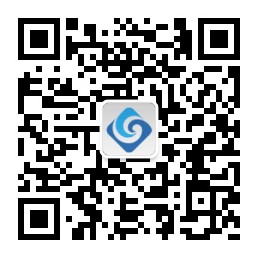
委员会条例(EU) 2017/2229,就铅、汞、三聚氰胺和去喹啉的最高含量,修订欧洲议会和理事会条例2002/32/EC的附件I
技术法规类型:欧盟Eurlex法规 来源:tbtmap
EURLEX ID:32017R2229
OJ编号:OJ L 319, 5.12.2017, p. 6–9 (BG, ES, CS, DA, DE, ET, EL, EN, FR, HR, IT, LV, LT, HU, MT, NL, PL, PT, RO, SK, SL, FI, SV)
中文标题:委员会条例(EU) 2017/2229,就铅、汞、三聚氰胺和去喹啉的最高含量,修订欧洲议会和理事会条例2002/32/EC的附件I
原文标题:Commission Regulation (EU) 2017/2229 of 4 December 2017 amending Annex I to Directive 2002/32/EC of the European Parliament and of the Council as regards maximum levels for lead, mercury, melamine and decoquinate (Text with EEA relevance. )
生效日期:2017-12-25
废止日期:9999-12-31
法规全文:查看欧盟官方文件
|
5.12.2017 |
EN |
Official Journal of the European Union |
L 319/6 |
COMMISSION REGULATION (EU) 2017/2229
of 4 December 2017
amending Annex I to Directive 2002/32/EC of the European Parliament and of the Council as regards maximum levels for lead, mercury, melamine and decoquinate
(Text with EEA relevance)
THE EUROPEAN COMMISSION,
Having regard to the Treaty on the Functioning of the European Union,
Having regard to Directive 2002/32/EC of the European Parliament and of the Council of 7 May 2002 on undesirable substances in animal feed (1), and in particular Article 8(1) thereof,
Whereas:
|
(1) |
Directive 2002/32/EC provides that the use of products intended for animal feed which contain levels of undesirable substances exceeding the maximum levels laid down in Annex I to that Directive is prohibited. |
|
(2) |
The European Food Safety Authority (‘the Authority’) adopted a scientific opinion on the safety and efficacy of dicopper (l) oxide as feed additive for all species (2). In the opinion it is indicated that the levels of lead in dicopper (l) oxide exceed in certain cases the current Union maximum levels for lead but the levels found do not present a safety concern as the animal exposure to lead through the use of that additive would be lower than that resulting from the use of other copper compounds compliant with Union law. Based on the information provided, the maximum level for lead in feed additives belonging to the functional group of compounds of trace elements is not achievable on a consistent basis for dicopper (l) oxide by applying good manufacturing practices. It is appropriate to adapt the maximum level for lead in dicopper (l) oxide. |
|
(3) |
Many co-products and by-products of the food industry intended for pet food are mainly from tuna. The current maximum levels of mercury for those co-products and by-products are lower than the maximum level of mercury applicable to tuna for human consumption, which causes a shortage in the supply of such co-products and by-products compliant with the maximum level of mercury for use in pet food. Therefore it is appropriate to adapt the maximum level for mercury for fish, other aquatic animals and products derived intended for the production of compound feed for dogs, cats, ornamental fish and fur animals, whilst keeping a high level of animal health protection. |
|
(4) |
The Authority adopted a scientific opinion on the safety and efficacy of guanidinoacetic acid (‘GAA’) for chickens for fattening, breeder hens and roosters, and pigs (3). The additive guanidinoacetic acid is specified to contain melamine as impurity up to 20 mg/kg. The Authority concluded that the contribution of GAA to melamine content in feed would be of no concern. Maximum level for melamine in feed has been established in Directive 2002/32/EC. No maximum level of melamine is yet established for GAA. Therefore it is appropriate to set a maximum level for melamine in GAA. |
|
(5) |
Commission Implementing Regulation (EU) No 291/2014 (4) reduced the withdrawal time for decoquinate from three days to zero days. Therefore the provision for the unavoidable carry-over of decoquinate in withdrawal feed for chickens for fattening should be deleted. |
|
(6) |
Directive 2002/32/EC should therefore be amended accordingly. |
|
(7) |
The measures provided for in this Regulation are in accordance with the opinion of Standing Committee on Plants, Animals, Feed and Food, |
HAS ADOPTED THIS REGULATION:
Article 1
Annex I to Directive 2002/32/EC is amended in accordance with the Annex to this Regulation.
Article 2
This Regulation shall enter into force on the twentieth day following that of its publication in the Official Journal of the European Union.
This Regulation shall be binding in its entirety and directly applicable in all Member States.
Done at Brussels, 4 December 2017.
For the Commission
The President
Jean-Claude JUNCKER
(1) OJ L 140, 30.5.2002, p. 10.
(2) EFSA FEEDAP Panel (EFSA Panel on Additives and Products or Substances used in Animal Feed), 2016. Scientific opinion on the safety and efficacy of dicopper (l) oxide as feed additive for all animal species. EFSA Journal 2016;14(6):4509, 19 pp. doi:10.2903/j.efsa.2016.4509 http://onlinelibrary.wiley.com/doi/10.2903/j.efsa.2016.4509/epdf
(3) EFSA FEEDAP Panel (EFSA Panel on Additives and Products or Substances used in Animal Feed), 2016. Scientific opinion on the safety and efficacy of guanidinoacetic acid for chickens for fattening, breeder hens and roosters, and pigs. EFSA Journal 2016;14(2):4394, 39 pp. doi:10.2903/j.efsa.2016.4394 http://onlinelibrary.wiley.com/doi/10.2903/j.efsa.2016.4394/epdf
(4) Commission Implementing Regulation (EU) No 291/2014 of 21 March 2014 amending Regulation (EC) No 1289/2004 as regards the withdrawal time and maximum residues limits of the feed additive decoquinate (OJ L 87, 22.3.2014, p. 87).
ANNEX
Annex I to Directive 2002/32/EC is amended as follows:
|
(1) |
Row 4 of Section I, Lead, is replaced by the following:
|
|
(2) |
Row 5 of Section I, Mercury, is replaced by the following:
|
|
(3) |
Endnote 13 to section I: Inorganic contaminants and nitrogenous compounds, is replaced by the following:
|
|
(4) |
Row 7 of Section I, Melamine, is replaced by the following:
|
|
(5) |
Row 1 of Section VII, Decoquinate is replaced by the following:
|
附件:
托管标准,您可以接收以下服务:
1 标准定期系统查新,若有最新版本,会以站内短信或邮件的形式通知用户;
2 随时在标准托管页面中查看到该条标准的最新状态;
3 若用户有在学习和科研中的需要,可以在标准托管页面中试阅标准;
4 企业如果需要上新产品,我院及时提供标准查询、采购等方面的支持;
5 为企业在标准制修订、企业良好行为创建以及标准化试点过程中遇到的困难,可联系我院指定相关专家负责进行指导帮助、提供政策咨询;
6 为企业提供标准化政策的解读、标准化知识的推广培训、标准自我公开声明、标准文献的免费查询、企业标准化体系建设等方面的标准化服务;
标准资讯点击排行榜 全部
资讯标题点击
[[ n.title ]] [[ n.read ]]大连标准化公共服务平台
版权:大连标准化研究院有限公司
地址:大连市中山区高原街56号
电话:0411-82740851
